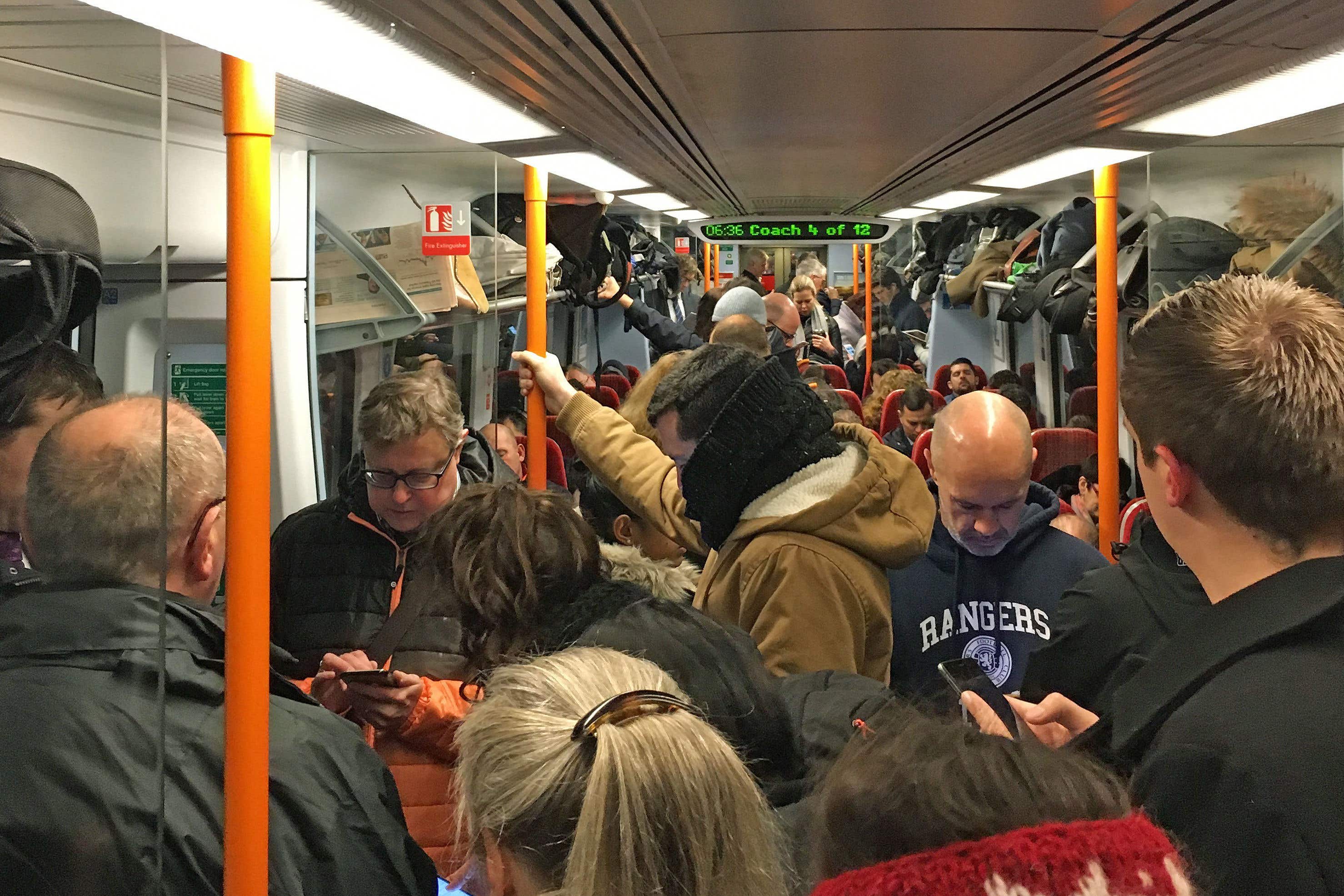Almost one in seven rail passengers standing during peak hours in cities
A total of 13.8% of passengers were standing on peak rail services arriving or departing from cities across England and Wales in autumn 2022.

Your support helps us to tell the story
From reproductive rights to climate change to Big Tech, The Independent is on the ground when the story is developing. Whether it's investigating the financials of Elon Musk's pro-Trump PAC or producing our latest documentary, 'The A Word', which shines a light on the American women fighting for reproductive rights, we know how important it is to parse out the facts from the messaging.
At such a critical moment in US history, we need reporters on the ground. Your donation allows us to keep sending journalists to speak to both sides of the story.
The Independent is trusted by Americans across the entire political spectrum. And unlike many other quality news outlets, we choose not to lock Americans out of our reporting and analysis with paywalls. We believe quality journalism should be available to everyone, paid for by those who can afford it.
Your support makes all the difference.About one in seven rail passengers were standing when arriving or departing from cities across England and Wales in autumn 2022, new figures show.
This is up from around one in 20 in autumn 2021, but still below pre-pandemic levels when the proportion stood at one in six.
An average of 173,042 people a day were standing across both morning and afternoon peak times in autumn last year, the equivalent of 13.8% of passengers, according to data from the Department for Transport (DfT).
Railway stations in London accounted for the majority of this total (164,904), where 17.7% of passengers had to stand – up sharply from 6.0% in autumn 2021, but down compared with autumn 2019 (18.8%).
Across cities outside London, the figure was much lower, at 2.5%, up from 1.3% in 2021 but well down on 10.1% in 2019.
This suggests that passengers travelling in and out of London have returned to trains at peak hours in greater numbers than those elsewhere in the country.
The DfT report says the increase in 2022 was predominantly driven by the 11.7 percentage point increase in the proportion of passengers standing in London.
The cities outside London with the highest daily average of passengers having to stand on peak-time services last autumn were Nottingham (10.5%) and Leicester (5.0%).
These were the only two cities to record levels of standing that were higher than before the pandemic (6.6% and 3.1% respectively).
By contrast, other cities are still showing numbers below 2019 levels such as Leeds with 2.3% compared to 15.3% and Cambridge with 0.4% compared to 12.6%.
The figures also show there were an average of 1.6 million daily passenger arrivals at major cities in England and Wales in autumn 2022, up 45% compared to autumn 2021, but 15% below the same period in autumn 2019.
London had the highest passenger numbers arriving into a city across the day at 988,053, more than nine times that of Birmingham, which was the second highest at 108,880.
Based on all-day arrivals in autumn 2022, train operators ran services with a daily seating capacity of 4.3 million: approximately 2% higher than in autumn 2021, but 7% lower than 2019.
It comes as more than a year of industrial action continues in a bitter row over pay, jobs and conditions.
Members of the Rail, Maritime and Transport union staged two strikes last week and will walk out again on Saturday.
The statistics released on Tuesday by the Department for Transport represent passengers on National Rail services on a “typical” weekday.
Where possible, the count period excludes days when there was disruption, such as a day of rail strikes, the report adds.